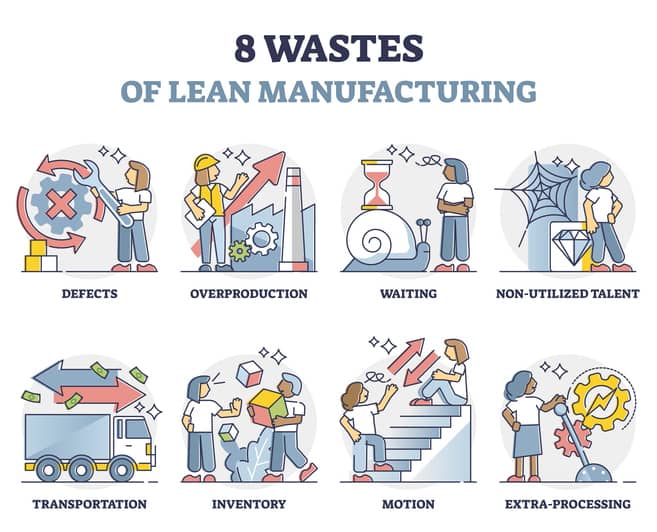Lean accounting gained popularity in the first decade of the 21st century as more organizations adopted Lean practices. It involves using alternative accounting measures to better evaluate Lean’s impact on process improvement strategies and business operations. Most importantly, it gives business leaders a way to measure success of Lean implementation.
The information gleaned from using Lean accounting puts numerical value to changes organizations make through process improvement tools. While business leaders may often see how changes impact operations (such as improved customer satisfaction), Lean accounting puts a number to that value.
Lean accounting is a different issue than applying Lean principles to accounting operations, although that also has proven successful. For example, one New England accounting firm that adopted Lean practices streamlined client communication, made financial documents easier to submit and opened up employees to take on new projects.
Throwing Out Traditional Concepts
In a look at Lean accounting as it first started gaining traction, the Journal of Accountancy reported that “CPAs have begun to realize many standard cost accounting practices no longer make sense. A growing number of businesses are implementing Lean accounting concepts to better capture the performance of their operations.”
Today, accounting departments have adapted Lean accounting as a way of providing a more accurate picture to their clients. As the Association For Manufacturing Excellence writes: “It doesn’t take long before a company serious about Lean sees that their accounting systems need to change. Lean thinking and methods are quite different from traditional business and require different ways to measure their work and their Lean progress.”
The assessment of inventory provides a good example. Traditional accounting views inventory creation as an asset – something owned, not a debt. That value is added to the company’s overall net worth, even if it sits in a warehouse for a long period of time.
In Lean, excess inventory represents one of the eight wastes of Lean that companies want to eliminate to improve efficiency. By using Lean accounting, the cost of maintaining inventory is calculated as detrimental. For organizations that put Lean principles into place, having the right amount of inventory is seen as the asset, not the inventory itself.
Organizing Costs By Value Stream
Traditional accounting measures also use standard costing, which can lead to inaccurate information for decision makers who put Lean tools and techniques into place. Rather than using a traditional approach, Lean accounting uses a method that categorizes costs by value stream rather than by department.
This approach “provides the basis for sound management decisions,” according to research conducted at the Kristu Jayanti College in India. The researchers define value stream accounting as “tracking revenue and the associated variable costs required to generate those sales.”
They found that value stream costing includes a simpler cost collection method and reduces the number of cost centers. They also list features of value stream accounting.
- Costs calculated weekly
- No distinction made between direct or indirect costs – all costs of the value stream are considered direct costs
- Value stream costs include labor, materials, production support, machines and equipment, operation support, facilities and maintenance
- Value stream costing provides a more accurate picture by elimination of unnecessary costs outside control of value stream managers
Lean accounting groups together costs that fall outside of the value stream as “business sustaining costs” that do not get included in value stream costs.
In an interview about Lean accounting with Industry Week, Lean Six Sigma Institute co-founder Luis Socconini said once accountants become accustomed to Lean accounting, it makes for a more straightforward way to track costs. And for business leaders, he said Lean accounting enables them to “know what is the real cost. With this knowledge, they really know if the company is making money or losing money in real time.”
This, in turn, helps them find better price points for products and do further research into high cost areas. The bottom line is that Lean accounting can help business leaders quickly know if they are heading in the right direction or need to make a change.



